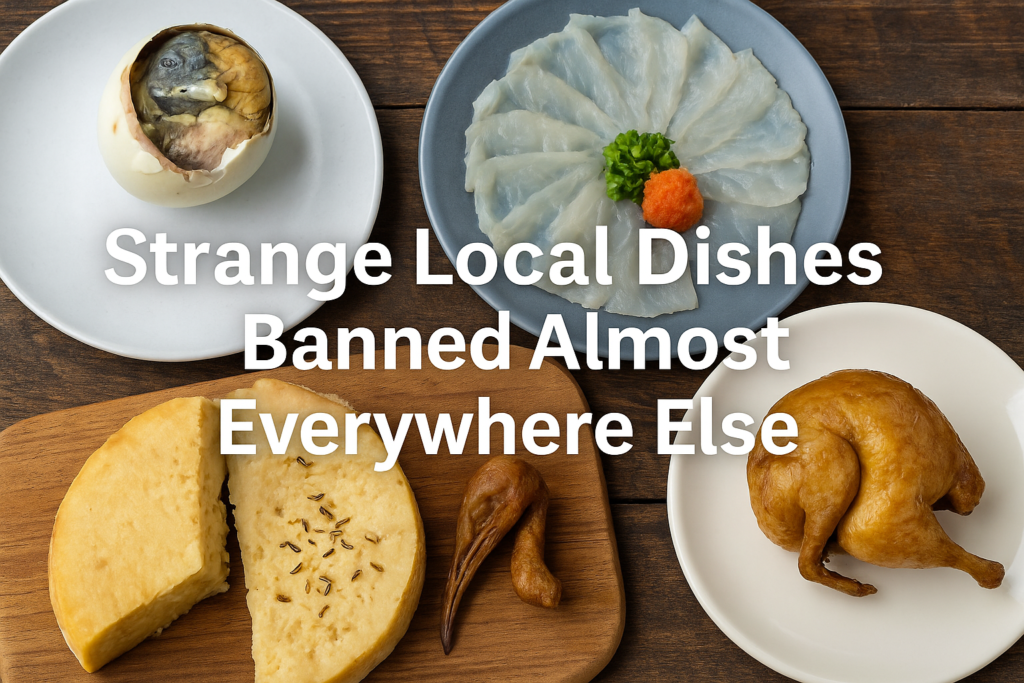
Some foods are too raw, rare, or shocking for global approval. While every culture has its comfort food, certain dishes push the limits of legality, banned across borders due to animal rights laws, food safety regulations, or sheer public outrage. Yet in their home countries, they’re protected, celebrated, and even served with pride. Whether it’s a buttery bird plucked from cliffs or a centuries-old cheese still squirming with life, you’ll only find these dishes on the menu in one country, if you dare to try them. Here are 13 legal foods in just one nation and off-limits almost everywhere else.
1. Puffin Heart (Iceland)

In Iceland, eating the heart of a puffin isn’t just legal, it’s a celebrated delicacy. Puffins are hunted during specific seasons, particularly on remote cliffs, using a traditional method called “sky fishing,” where locals catch the birds mid-flight with a large net on a pole. The heart, often pan-fried and served warm, is considered the most flavorful part of the bird. While puffin meat has a rich, gamey taste similar to duck, the heart is especially tender and prized in Icelandic fine dining. Chefs in Reykjavik have turned it into a gourmet experience, with one famously offering it freshly pan-seared in front of diners.
While puffin meat has a deep cultural significance in Iceland, it’s strictly off the table in most other countries. Conservation laws in places like the U.K., Canada, and the United States classify puffins as protected species due to their declining numbers and fragile breeding colonies. Even within Iceland, some conservationists argue that hunting pressures should be reduced as populations fluctuate. Yet the tradition persists, particularly on the Westman Islands, where puffin hunting is considered a rite of passage. Tourists often express discomfort at the practice, but locals see it as no different than hunting duck or foraging for seasonal foods. Iceland remains one of the only countries where puffin can legally be served, and where it’s not just allowed, but celebrated. National Geographic
2. Casu Marzu (Sardinia, Italy)
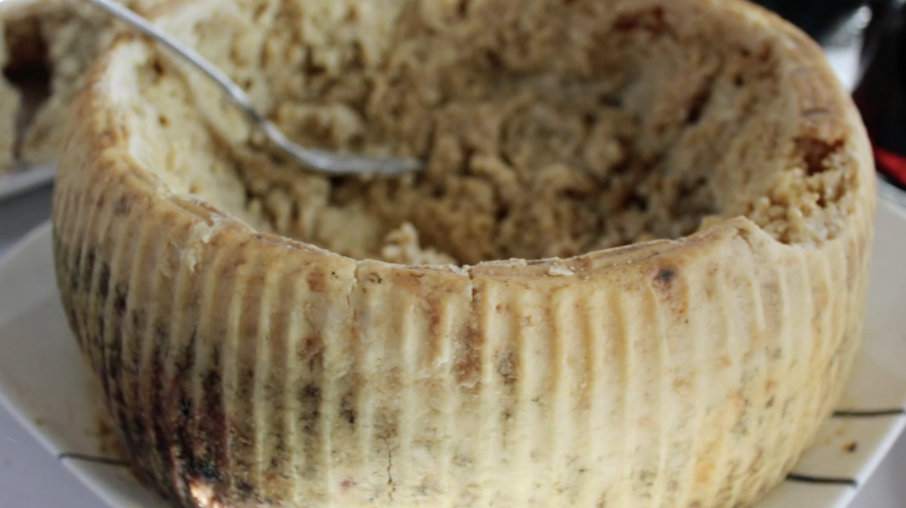
Casu marzu, which translates to “rotten cheese,” is an alive Sardinian sheep’s milk cheese. After the initial fermentation, the cheese is intentionally left uncovered so cheese flies (Piophila casei) can lay eggs inside it. The larvae hatch and begin eating the cheese, breaking down the fats and creating a soft, almost spreadable texture. The result? A pungent, ammonia-strong delicacy filled with wriggling maggots. Locals typically eat it with traditional Sardinian flatbread and a strong red wine, though the live maggots have been known to leap off the plate if disturbed.
Despite its notoriety, casu marzu has become a symbol of Sardinian identity. The European Union banned it on food safety grounds, citing risks from consuming live larvae, yet locals argue it’s been eaten for centuries without incident. It’s often made in secret and passed down through families, or sold under the table at small local markets. Authorities occasionally crack down, but enforcement is inconsistent, and demand remains strong among those who see the cheese as a rare delicacy. Because it can’t be legally sold in stores, many Sardinians view it as a culinary rebellion against sanitized food standards imposed from the mainland. Some have even petitioned UNESCO to classify it as a protected traditional food, hoping to preserve its legacy. For now, it remains legal only on its native island, where the brave (and slightly squeamish) can still take a bite. BBC Travel
3. Ortolan Bunting (France)

The ortolan bunting, a small migratory songbird, was once one of the most exclusive and secretive dishes in French haute cuisine. Traditionally served whole and eaten in a single bite, the bird was prized for its complex layers of flavor, said to evoke hazelnuts, fat, and rich game all at once. Diners would cover their heads with a large napkin while eating, not just to trap the aroma, but as part of a private, almost sacred ritual. The dish became the stuff of legend in elite culinary circles, known as much for its mystique as for its bold taste. Though the ortolan was always rare, it remained a symbol of indulgence for decades, even as conservation concerns began to mount.
France banned the hunting, sale, and consumption of ortolan in 1999 in accordance with EU bird protection laws, but enforcement was lax for years. It wasn’t until the mid-2000s that serious crackdowns began, prompted by environmental groups and international pressure. Today, eating ortolan is effectively illegal everywhere except under extremely rare exemptions for cultural heritage, which are almost never granted. Yet reports suggest the dish still appears at underground dinners hosted by high-profile food elites, where it’s consumed more as a rebellious act than a regular course. For now, France remains the only place where ortolan was ever legal to eat, though even there, the bird has largely vanished from the table. Smithsonian Magazine
4. Raw Horse Meat (Japan)
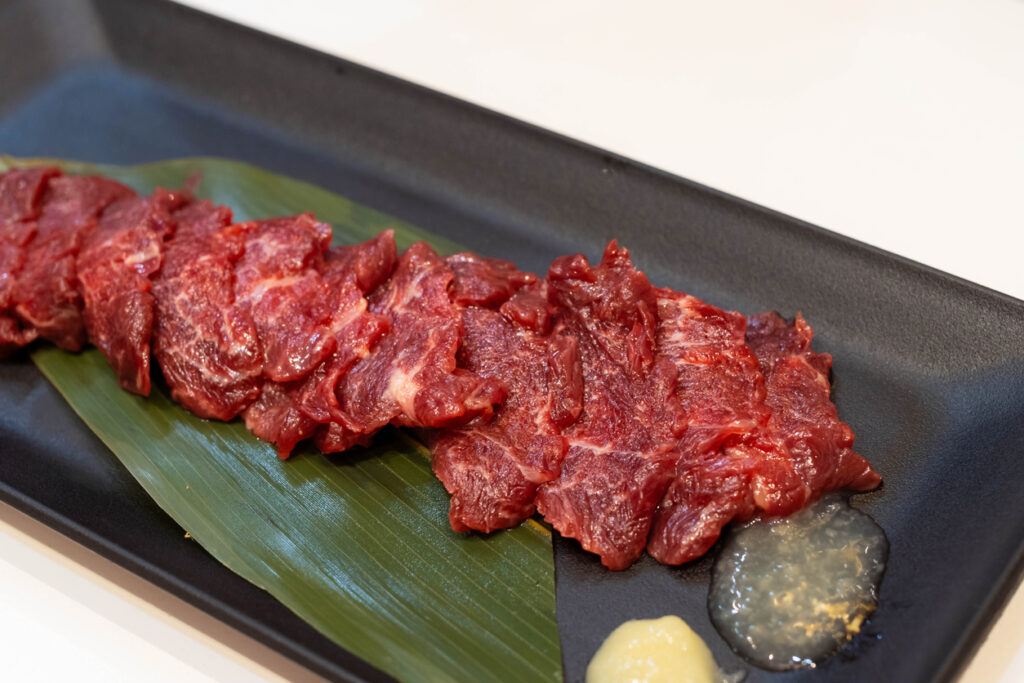
In Japan, Basashi, orthinly sliced raw horse meat is served sashimi-style, often garnished with grated ginger, garlic, soy sauce, and chopped scallions. It’s especially popular in Kumamoto Prefecture, where the cool climate supports horse breeding and long-standing culinary traditions. The meat is typically chilled or lightly frozen before being sliced paper-thin, giving it a tender texture and mild, sweet flavor. Often called “sakuraniku” or “cherry blossom meat” for its pink hue, basashi is considered a delicacy and is commonly found in izakayas (Japanese pubs), especially in rural regions. It’s also said to be high in protein and lower in fat than beef, appealing to health-conscious diners who are unfazed by the taboo.
While Japan embraces basashi, the practice of eating horse meat especially raw is banned or heavily restricted in much of the world. In countries like the United States, horse slaughter for human consumption is illegal, and in others such as the UK and Australia, it’s culturally taboo. Raw meat regulations also prohibit dishes like this in many parts of Europe and North America due to health concerns over parasites like Trichinella. Japan stands nearly alone in normalizing and proudly celebrating horse sashimi, where it’s not just legal, but widely respected as a regional culinary treasure. Japan Times
5. Fermented Greenland Shark (Greenland)

Hákarl is one of the most notorious traditional foods in Greenland. Made from the meat of the Greenland shark, it requires a careful fermentation process to become safe to eat. The shark’s flesh contains natural toxins, including trimethylamine oxide and urea, which make it poisonous when fresh. To neutralize these compounds, the meat is first buried in gravelly sand for several weeks, then hung in open-air drying sheds for several months. The result is a dense, chewy meat with a sharp ammonia smell and a taste often described as somewhere between strong cheese and industrial cleaner. It’s typically served in small cubes and eaten with toothpicks, often accompanied by a strong local schnapps during traditional gatherings.
Outside of Greenland and parts of Iceland, hákarl is considered both unpalatable and unsafe. Many food safety regulations prohibit the sale or consumption of fermented shark due to its potential health risks and intense chemical profile. In the European Union and North America, there are no approved commercial processes for rendering shark meat edible through fermentation, making it illegal to sell or import. Still, in Greenland, it remains a deeply rooted culinary tradition, valued for its history, preservation method, and cultural resilience. Culinary Schools
6. Fertilized Duck Egg (Philippines)
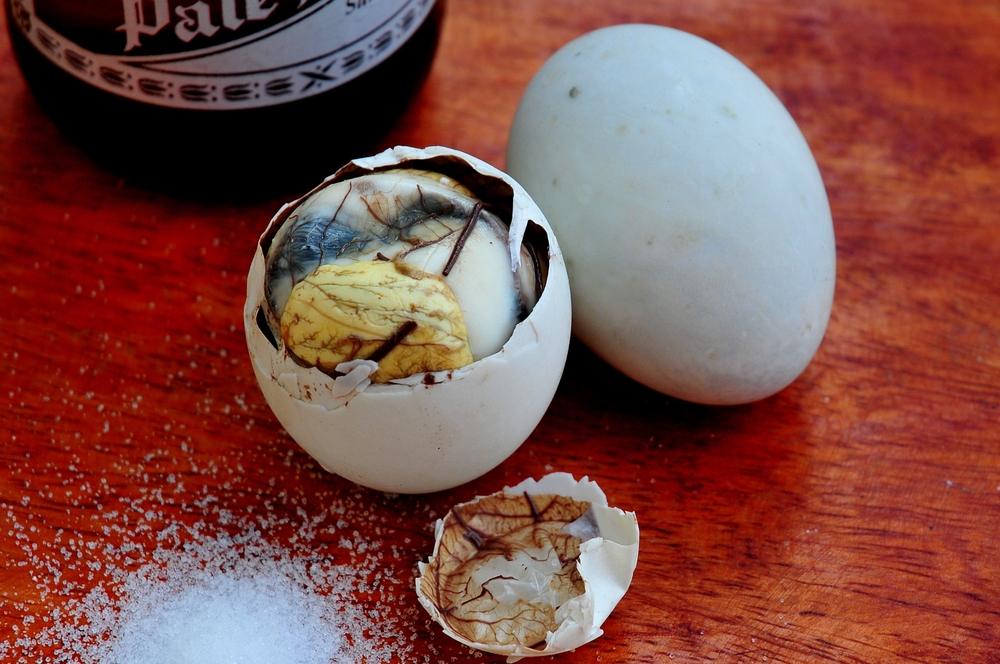
Balut is a fertilized duck egg incubated for 14 to 21 days before being boiled and eaten whole, including the embryo, yolk, broth, etc. The partially developed duckling inside may have visible features like feathers, beak, or tiny bones, depending on how long it’s been incubated. In the Philippines, street vendors commonly sell balut as a warm, protein-packed snack often seasoned with salt or vinegar. It’s considered a rich source of calcium and iron, and it’s long been associated with stamina and virility. For many Filipinos, balut is a snack and a nostalgic comfort food, often linked to childhood memories or local traditions.
Despite its cultural significance, balut is banned or heavily restricted in many countries due to animal welfare laws and food safety concerns. In the United States, it’s legal in some states but regulated under egg inspection and embryo development rules. Countries like Canada, the U.K., and Australia often prohibit it outright on ethical grounds, especially where embryonic animals are involved in food production. Only in the Philippines is balut widely accepted, legally sold on the street, and integrated into the national food culture. CNN Travel
7. Baby Mice Wine (China)

Baby mice wine is one of the most shocking traditional tonics still consumed in parts of rural China. To make it, live newborn mice, typically only a few days old and still hairless, are placed into a bottle of rice wine and left to ferment for several months. The mice drown and break down inside the alcohol, infusing the liquid with their essence. The result is a pungent, medicinal liquor believed in folk medicine to treat everything from asthma to liver disease. Some say the flavor is harsh and earthy, while others compare it to gasoline with a hint of decay, definitely not your average cocktail.
The practice is deeply controversial and illegal in most of the world, including Europe, North America, and much of Asia. Animal cruelty laws and food safety standards make it impossible to import or produce baby mice wine commercially outside China, where it’s already rare and fading in popularity. Still, among traditional medicine practitioners and curious collectors, the drink is sought out as a bold and borderline mythical cure-all. Its survival depends largely on oral tradition and local beliefs, making China the only country where this bizarre brew is still occasionally consumed and culturally permitted. India Times
8. Pufferfish (Japan)
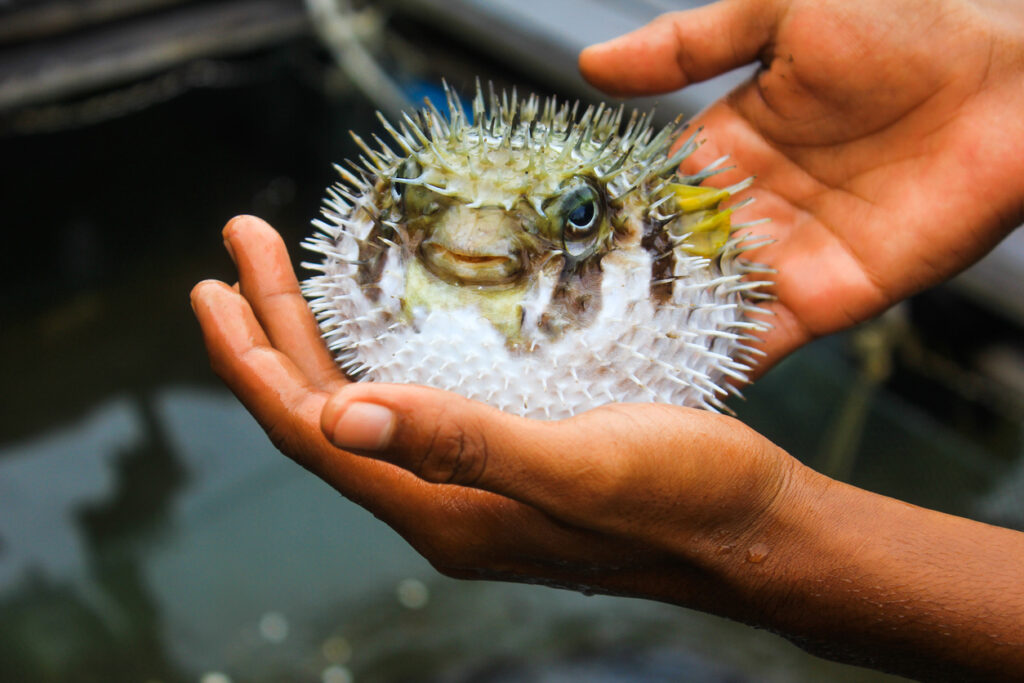
Fugu, or pufferfish, is one of the most dangerous dishes you can legally eat, but only in Japan. The fish contains tetrodotoxin, a potent neurotoxin that is 1,200 times deadlier than cyanide and can cause paralysis or death if prepared incorrectly. Only licensed chefs who undergo years of training and pass rigorous exams can serve fugu in restaurants. The liver, ovaries, and skin contain the highest concentrations of toxins, so these parts are strictly removed under Japanese law. When sliced properly, fugu is often served as translucent sashimi arranged like a chrysanthemum flower, or gently simmered in a hot pot called “fugu-chiri.”
Outside of Japan, most countries have banned the import and sale of pufferfish due to safety concerns. In the United States, for example, the FDA allows only specially licensed importers to bring in small, pre-cleaned quantities from approved Japanese suppliers. Fugu is banned entirely in many European countries, including France and Germany. Japan remains the only nation where the dish is legally and proudly prepared from raw fish under tightly regulated conditions. Despite its risks, many diners seek it out for the thrill, trusting the chef’s precision with every delicate, translucent bite. Savor Japan
9. Marmot (Mongolia)
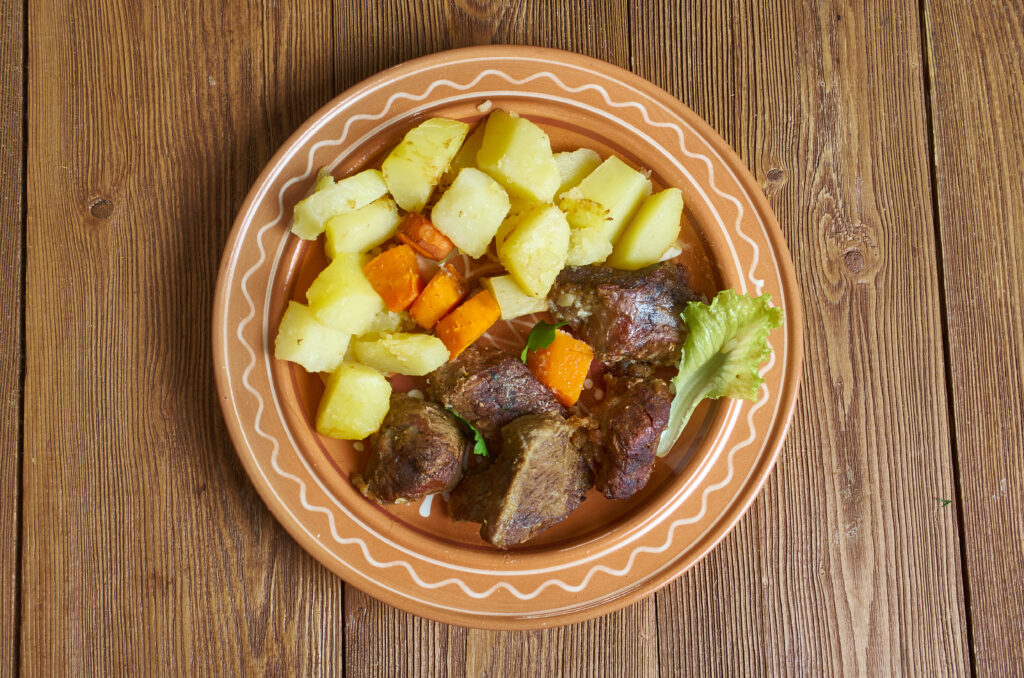
Boodog is a traditional Mongolian dish that takes whole-animal cooking to a different level. Typically made with marmot or goat, the preparation begins by removing the animal’s bones from the inside without slicing open the skin. Hot river stones are placed directly into the cleaned carcass, which is tied shut and roasted from the inside out using its skin as a pressure cooker. The fur is singed off with a blowtorch or over an open flame, giving the exterior a smoky finish. The resulting meat is fall-apart tender, infused with steam and natural juices, and often served outdoors during hunting trips or ceremonial feasts.
Marmots are not commonly eaten outside Mongolia, and in most countries, the preparation method, along with the animal itself, would be considered unsafe and unsanitary. Cases of bubonic plague from wild marmot consumption have led to periodic warnings even within Mongolia, but the dish continues to be a point of cultural pride. It’s illegal in much of the world to serve an animal cooked using internal hot stones, as it doesn’t meet international food safety codes. Still, in the Mongolian countryside, boodog remains a rare, rugged experience that combines tradition, resourcefulness, and open-fire ingenuity. Atlas Obscura
10. Roasted Jungle Rodent (Peru)
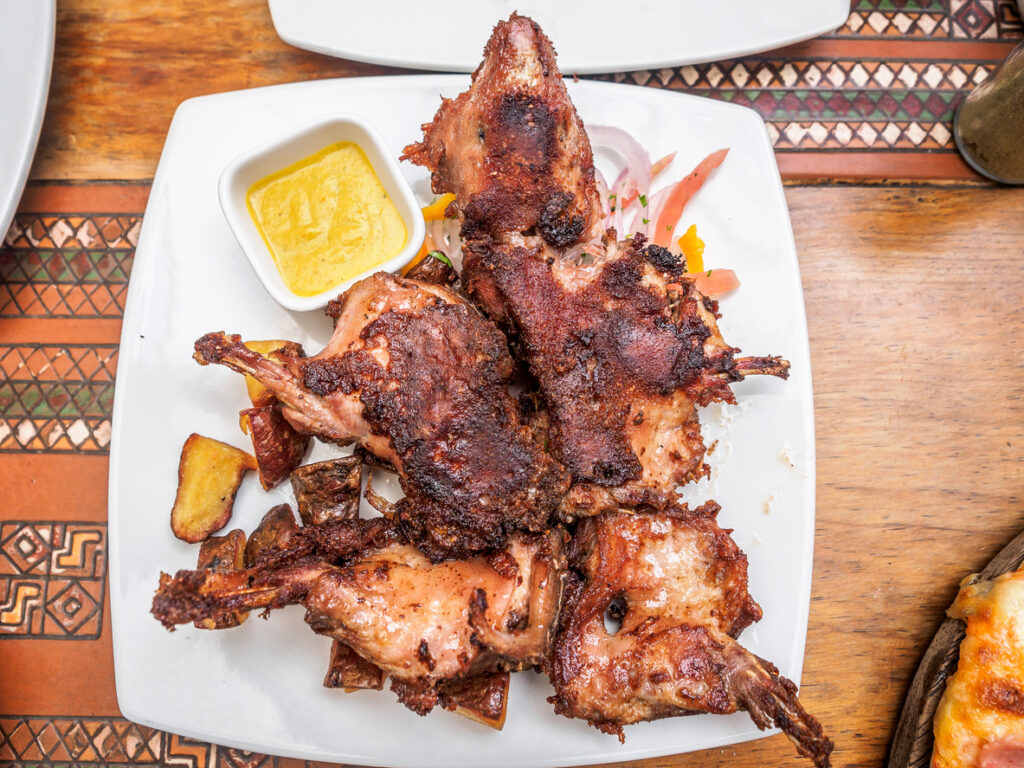
In parts of the Peruvian Amazon, majás, a large jungle rodent known as the paca, is a highly prized delicacy. With a spotted coat and chunky body, it resembles a small capybara and can weigh up to 25 pounds. Locals roast it whole over an open fire or prepare it in rich stews seasoned with wild herbs and regional spices. The meat is dark, lean, and slightly sweet, often compared to pork or rabbit. For many Indigenous communities, majás is more than just a source of protein; it’s part of a deep cultural connection to the rainforest and sustainable, seasonal hunting practices that have existed for generations.
Outside of Peru and a few parts of Brazil, eating paca meat is illegal or restricted under wildlife protection laws. The animal is classified as a game species or protected wildlife in many countries, making its commercial sale or international trade prohibited. Peru is one of the only places where majás can be legally hunted, prepared, and served, particularly in jungle regions where it’s sold at markets and featured in local restaurants. As conservationists push for more regulation, the dish remains a point of cultural tension between ecological preservation and traditional food rights. Mongabay
11. Zebu (Madagascar)

In Madagascar, one of the most coveted cuts of meat isn’t a filet or ribeye, it’s the fatty hump of the zebu, a breed of humped cattle common across parts of Africa and Asia. The hump stores fat much like a camel’s, creating a rich, buttery texture when slow-cooked. In Malagasy cuisine, the hump is typically stewed with ginger, garlic, and native greens, or grilled to render the fat into the surrounding meat. It’s considered a delicacy reserved for special occasions like weddings, funerals, or holidays, and carries deep cultural significance tied to family gatherings and ancestral traditions.
Zebu meat itself isn’t scarce, but the practice of harvesting and preparing the fatty hump is almost unique to Madagascar. In most countries, cattle breeds don’t develop such humps, and even in places where zebu exist, such as India or parts of Brazil, the hump is not commonly consumed. Export restrictions, animal classification laws, and regional culinary norms make it nearly impossible to find this dish outside Madagascar. Here, it’s not just legal, it’s treasured as a symbol of abundance and local identity. Brasil a Gosto Instituto
12. Fermented Herring (Sweden)
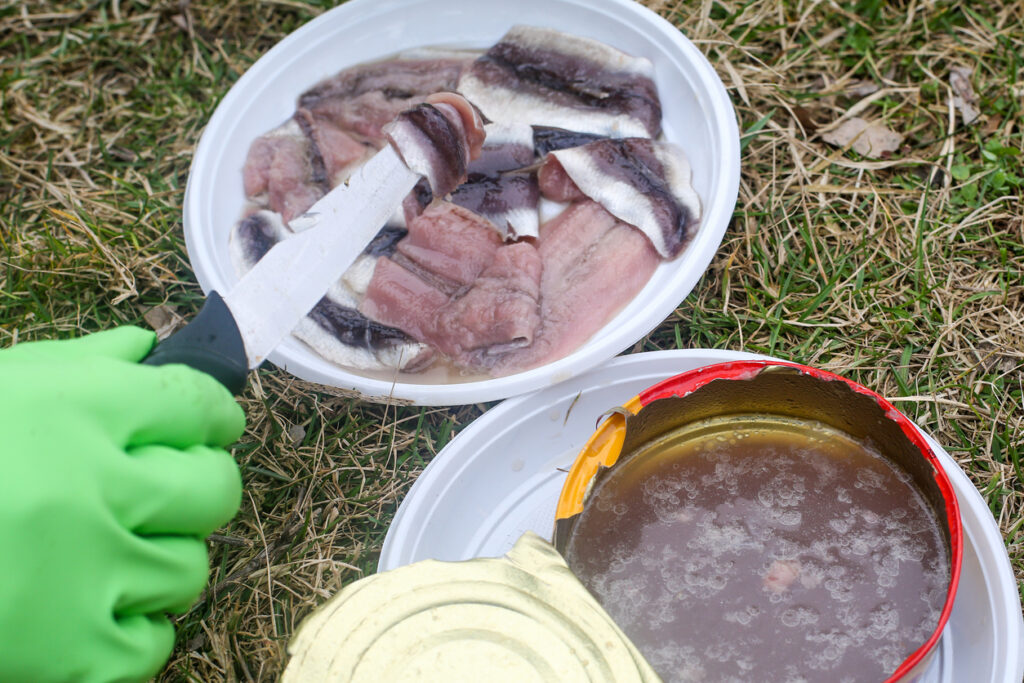
Surströmming is Sweden’s most infamous culinary export, though most of the world wants nothing to do with it. This traditional dish consists of Baltic herring that’s lightly salted and left to ferment for months in sealed tins. When the can is opened, it releases a notoriously foul odor, often compared to rotting eggs or sewage, which has earned it viral fame on the internet as a dare-worthy challenge. Despite the smell, Swedes traditionally enjoy it on flatbread with potatoes, onions, and sour cream during late summer outdoor feasts, especially in northern regions where the dish originated.
Due to its extreme fermentation process, surströmming has been banned on commercial airlines and is restricted in several countries under import laws related to food safety and explosive gas pressure from the cans. The European Union considered banning it under strict food preservation standards, but Sweden negotiated a cultural exception. As a result, it remains legally produced and sold only in Sweden, where it’s treated not just as food but as a rite of passage. The smell may be overwhelming, but to fans, it’s a flavor that connects them to tradition. The New Yorker
13. Chocolate Blood Pudding (Italy)

Sanguinaccio dolce is a decadent, velvety dessert made from an unexpected ingredient: pig’s blood. This traditional Italian treat combines fresh blood with dark chocolate, sugar, milk, cinnamon, and sometimes pine nuts or raisins to create a smooth pudding with a deep, bittersweet flavor. It was historically prepared during the Carnevale season in southern regions like Basilicata and Campania, when pigs were slaughtered and no part of the animal was wasted. Served warm or chilled, it’s often spooned into pastry shells, piped into cannoli, or eaten straight from a bowl by those who grew up with the dish as a beloved childhood ritual.
While some versions of blood pudding exist across Europe, sanguinaccio dolce is unique for its use of blood in a dessert, and it’s now banned in most of Italy. Concerns over hygiene and disease transmission led to a national prohibition on using fresh pig blood in food in 1992. As a result, the traditional recipe is only legal to make and serve in one region: Basilicata, which secured an exception due to its deep cultural ties to the dish. Outside this small pocket of southern Italy, the original sanguinaccio dolce can’t be legally prepared or sold. Atlas Obscura


